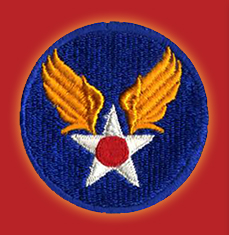Contrary to some sources, the Packard V12 4M-2500 marine engine did not start its life as a copy of the British Rolls Royce Merlin engine. The license built Merlin engines were not produced by Packard until well into the war years and were of smaller displacement (1670 CID). There is disagreement among sources as to whether the Packard 4M-2500 marine engine was an updated Packard Liberty engine which was introduced in 1924. The 4M-2500 is at best, a distant cousin. There were 1M, 2M, and 3M series marine engines so the 4M-2500 was not a brand new engine but a new generation engine. Senior Packard management report that Jesse Vincent, Packard’s lead engineer, started on the 3M-2500 experimental engine in 1939 based on converting the Packard 2500 aircraft engine into a marine version and seven were built for the U.S. Navy. It had quickly become evident that the project was going to be more complicated and expensive than planned and Packard lost $300,000.00 (1939 dollars) on the 3M-2500 project. After the challenges were overcome, they had redesigned the engine patterns, upgraded the quality control and metallurgy standards and made many major changes that involved extensive redesign. However, the basic dimensions remained. The engine continued to be a four-stroke, 60-degree V-12 with a 6.40-inch bore and a 6.50-inch stroke, which brought it to 2,490 cubic inches, with four valves per cylinder. With an aluminum block with steel cylinder sleeves and weighing in at 2,900 pounds, the engine had a 6.4:1 compression ratio, and a centrifugal supercharger; later models were also fitted with an intercooler.
This engine was used for both the 85 ft. crash boat, the more common PT-boats and The British Power Boat Co. high speed rescue launches . A Holley 1685F aircraft carburetor supplied the fuel, fired by two spark plugs per cylinder. The engines were dry sump with an external oil tank which had special baffles to reduce foaming. The engines were fresh water cooled via fairly small tube type heat exchangers, as were the V-drives. By the Korean War the heat exchangers were prone to getting small pin-hole leaks. This may have been in part caused by how they were drained for storage between the wars. Crews needed to provide make-up water from their drinking water tank. While PT-boats had an option to muffle their engines by routing the exhaust underwater, no such option was on either the 63' or 85' rescue boats, so with straight pipes, stealth operations were not an option on most rescue boats. However, there is substantial evidence that three boats in the OSS (forerunner to the C.I.A.) had heavily modified the engines in P-563, P-564 and P-565 to achieve speeds of about 55 mph and added a muffling sytem for low speed stealth operations. These modifications have been mentioned by several sources but specifics remain elusive.
The first engines developed 1,200hp, but later models with higher boost levels by the end of World War II made 1,500 hp. at 2400rpm, some source state 1,800 hp.but that was the emergency rating at 2800rpm according to Packard documents. The early engines required 91 octane gas, but the early W7-W8 models were up to 100 octane and toward the end of production, serveral Korean War veterans state that the model W14 required 115/135 octane (green avgas), although the Operators Manual, located in the Manuals & Publications section does not specify anything higher than 100 octane. It should be noted that the method of determining the octane rating has changed since that time and the same gasoline , if tested today, would get a lower octane rating, probably by 5 to 10 points. The early 85’ boats were equipped with W12s. Packard built between 12,000 and 14,000 marine engines during the war,depending on the source, three of which went into each of the Navy's 768 PT boats, two astern and one amidships for better service access and the British Vosper MTB's (Motor Torpedo Boats) in addition to the USAAF 85’ Air Sea Rescue Boats which used two per boat. I have not looked at the layout of the PTs but the difference in the number of engines may be due to the need to allow space for the dispensary with eight litters in the stern of the crash boats, or due to the additional weight of the torpedoes. As mentioned earlier, 85’ ASRs also had two Chrysler 6 cylinder “cruising engines” in the original design, others say they were Kermath marine conversions of 110 hp Ford V-8s, although very few were actually built, which may have taken the space of the third Packard engine installed on the PT boats. Under the Operators Manuals button you will find a PT Boat Engineers Handbook; essentially a Packard Manual without pictures. Since both the AAF 85' Rescue Boat and the US Navy PT boat used the Packard 4M-2500 W8 to W14 engines, the handbook would apply to both. To see excellant cut-away photos of the Packard engine click here and scroll about one third down the page.
The two engines face aft, through Joe’s Gear transmissions, each drive shaft connecting into a Watson and Flagg V-drive which then drove the prop shafts back under each engine. The supercharger was toward the stern and the gear shifter toward the bow. Both propellers turned the same way, clockwise (right-handed), looking from aft. In twin-screw installations the ideal arrangement is to have the tops of the propeller blades turning outward for better maneuvering qualities but this was not available with the Packard engines in the 85s which made docking a bit more challenging as it was almost impossible to get the stern to move to starboard. Much, but not all of the above information comes from http://www.PT-Boat.com and Packard documents on their website.

